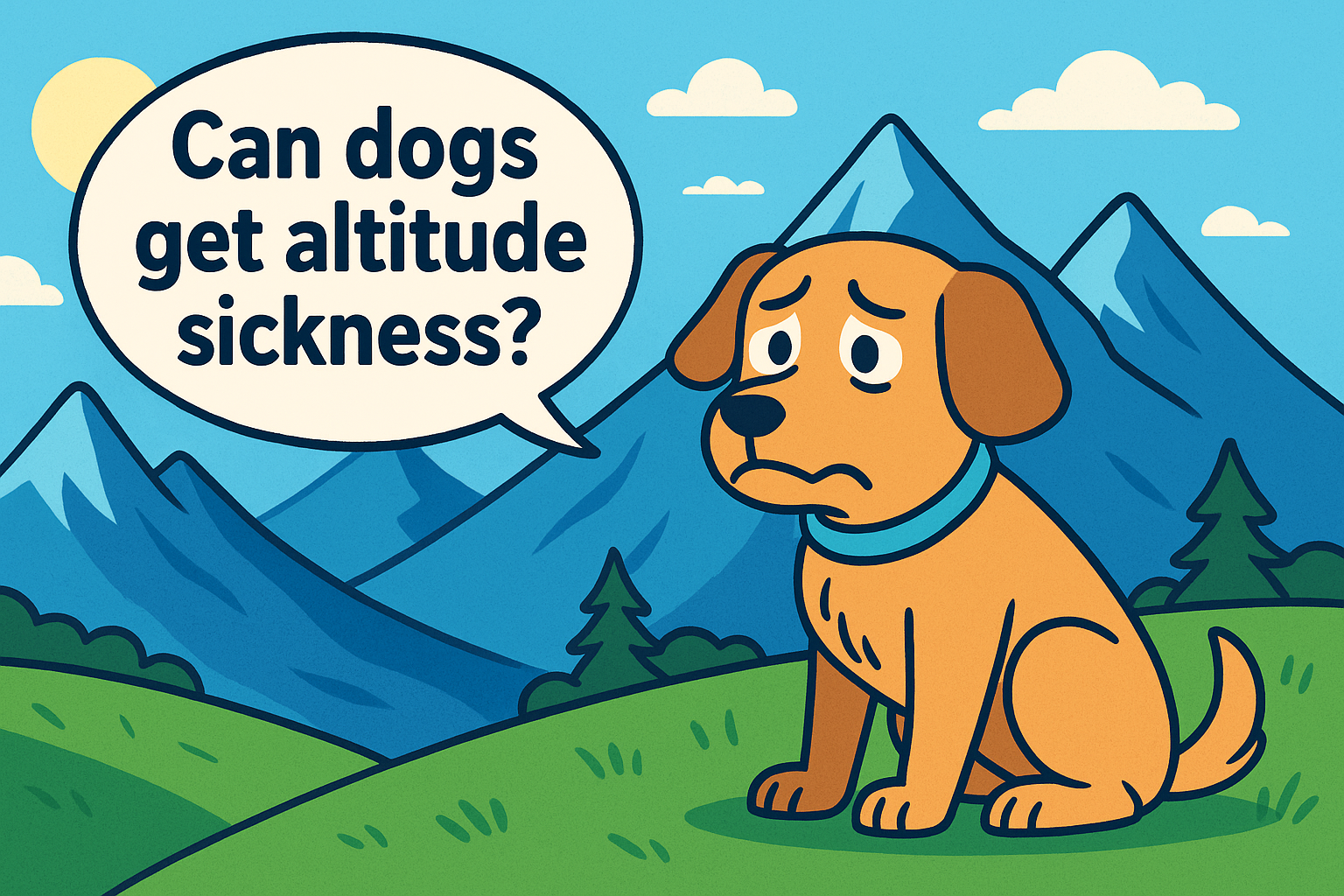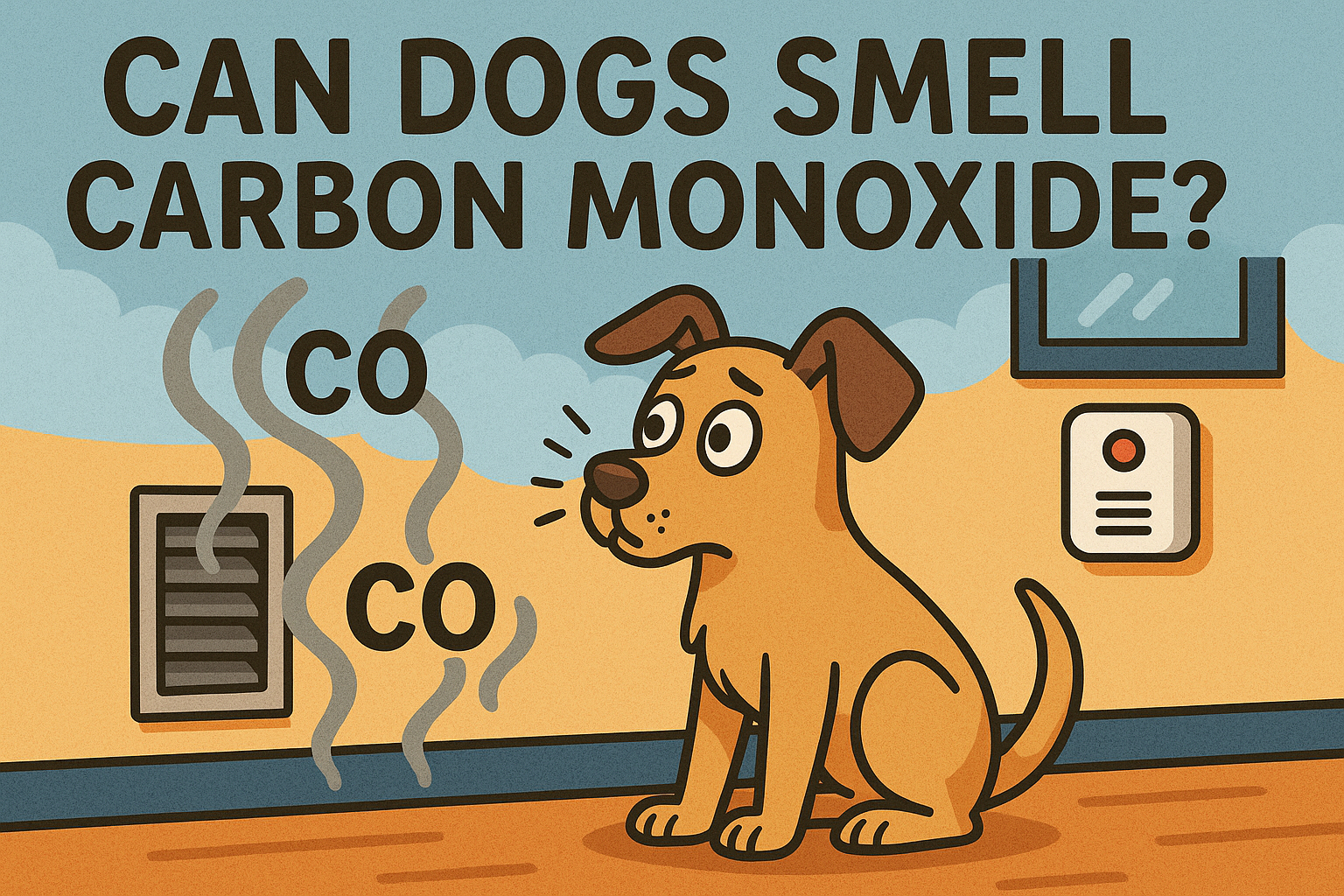Planning a trip to the mountains with your furry companion? Hiking or traveling to high elevations is a thrilling experience for you, but have you ever wondered if your dog is just as equipped to handle the change in altitude?
While humans often prepare for altitude changes, many pet owners overlook how it might affect their dogs. So let’s answer the real question right up front: Can dogs get altitude sickness? Yes, they can – and recognizing the symptoms early can make all the difference.
Can Dogs Get Altitude Sickness?
Yes, dogs can experience altitude sickness, especially when traveling to areas above 8,000 feet. Just like people, dogs need time to adjust to the decreased oxygen levels at higher altitudes. Their respiratory and circulatory systems can struggle to cope if the change is too sudden.
Dogs can’t tell you when they’re feeling unwell, so as a responsible pet owner, you need to watch for the signs. While some dogs adapt well, others may suffer from fatigue, nausea, or worse.
Why Altitude Affects Dogs
Altitude sickness in dogs happens for the same reason it affects humans: lower oxygen levels. As the air gets thinner, your dog’s body works harder to get the oxygen it needs.
Short-nosed breeds, like bulldogs and pugs, are particularly vulnerable. Their already limited airflow becomes more strained. Older dogs, overweight dogs, or those with respiratory or heart issues also face higher risks at elevation.
Since dogs can’t voice discomfort, early signs may go unnoticed. That’s why understanding the symptoms is crucial.
Symptoms of Altitude Sickness in Dogs
Knowing what to look for can help you take immediate action if your dog starts feeling the effects of high altitude. Common symptoms include:
- Lethargy or unusual tiredness
- Panting or struggling to breathe
- Vomiting or lack of appetite
- Unsteady movements or wobbliness
- Coughing or wheezing
- Excessive drooling
- Increased heart rate
- Pale or bluish gums
If your dog displays any of these signs, especially multiple at once, they may be suffering from altitude sickness and need your attention.
Which Dogs Are More at Risk?
While any dog can develop altitude sickness, certain dogs are more likely to be affected. These include:
- Brachycephalic breeds (like French Bulldogs, Boxers, and Pugs)
- Older dogs or those with existing health conditions
- Overweight dogs who may struggle with physical stress
- Inactive pets with low endurance
Even healthy, active dogs can develop symptoms if the altitude change is sudden. It’s all about how well their body adapts to thinner air.
How to Prepare Your Dog for High Altitude
If you’re heading to higher ground, preparing your pup in advance can make a big difference. Here are smart ways to help them adjust:
- Schedule a vet check-up before your trip, especially if your dog has any health concerns
- Gradually increase altitude over a few days instead of a rapid climb
- Keep them well-hydrated before, during, and after travel
- Avoid intense exercise for the first 24–48 hours at elevation
- Bring pet essentials: collapsible water bowl, comfort items, dog boots, warm clothing if needed
Planning ahead can mean the difference between a fun vacation and a medical emergency.
What to Do If Your Dog Shows Symptoms
If you notice signs of altitude sickness, don’t ignore them. Take these steps immediately:
- Stop any activity and let your dog rest
- Offer water and ensure they are staying hydrated
- Move to a lower altitude if symptoms persist or get worse
- Monitor their breathing and behavior for any changes
- Contact a vet right away, especially if your dog seems in distress
Quick action can prevent more severe outcomes and get your pet back to normal faster.
Preventing Altitude Sickness in Dogs
Prevention is always better than cure. To reduce your dog’s risk of altitude sickness:
- Ascend gradually to give their body time to adapt
- Avoid vigorous play during the first few days
- Provide shade and cool resting areas
- Don’t leave them in hot cars – altitude can affect temperature regulation
- Track their eating and drinking habits to ensure they’re maintaining good health
Simple habits can go a long way in keeping your dog comfortable and safe in higher elevations.
Can Altitude Sickness Be Fatal for Dogs?
Yes, if left untreated, altitude sickness can escalate into life-threatening conditions such as:
- High-Altitude Pulmonary Edema (HAPE) – fluid buildup in the lungs
- High-Altitude Cerebral Edema (HACE) – brain swelling due to oxygen deprivation
Both are emergencies. That’s why it’s so important not to take symptoms lightly. What starts as simple fatigue can quickly turn critical if not addressed.
When to Seek Emergency Veterinary Care
If your dog shows any of the following signs, seek emergency care immediately:
- Collapse or unresponsiveness
- Seizures or disorientation
- Severe difficulty breathing
- Gums that are pale, white, or bluish
Knowing where the nearest emergency animal hospital is before your trip can save valuable time.
Final Thoughts
Altitude sickness in dogs is real, and it can be serious if not addressed quickly. The good news? With preparation and attention, you can keep your dog safe and happy, even at high altitudes.
If you’re planning a trip to the mountains, remember: Yes, dogs can get altitude sickness. But with the right steps, your pup can enjoy the adventure as much as you do. Just stay informed, stay alert, and don’t ignore the signs. Your dog’s health could depend on it.
FAQs
How quickly can dogs get altitude sickness?
Dogs may show symptoms within a few hours of reaching high altitude, especially above 8,000 feet.
Can puppies get altitude sickness too?
Yes. Puppies are just as susceptible as adult dogs, and often less capable of handling stress or illness.
Are there medications to prevent altitude sickness in dogs?
Currently, there are no dog-specific altitude sickness drugs. Only a vet can suggest safe treatment options if needed.
Can dogs fly in planes without getting altitude sickness?
Cabin-pressurized flights are generally safe, but dogs traveling in cargo or on long flights might still experience discomfort.
Do dogs need time to acclimate like humans?
Yes. Dogs also benefit from slow exposure to higher altitudes, which helps their systems adjust gradually.









